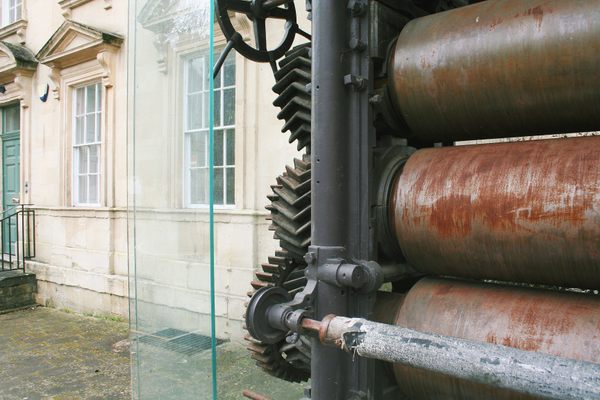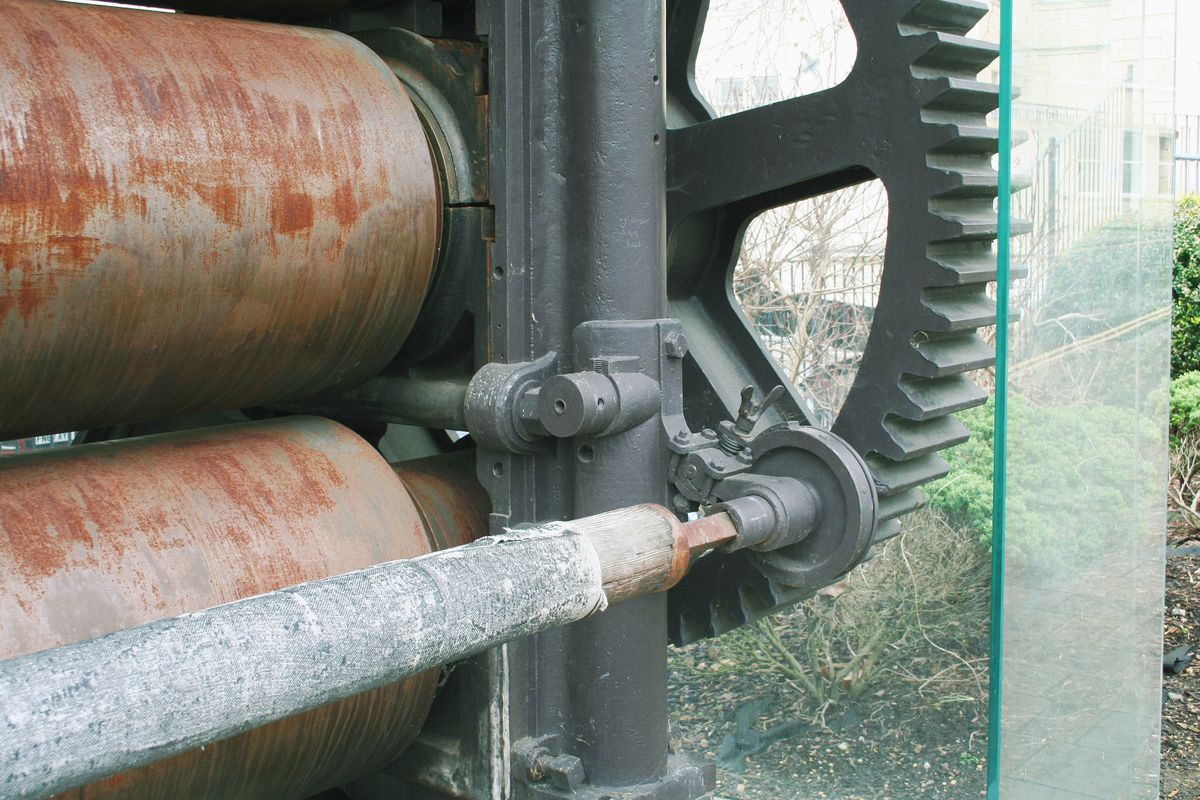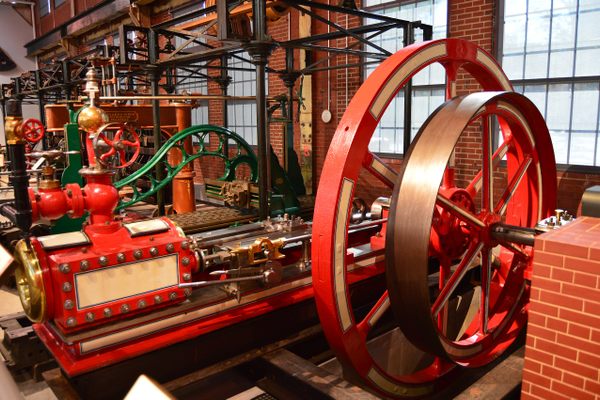About
Around 100 miles west of London in the west Wiltshire town of Bradford-on-Avon, a restored large rubber calender machine stands as a memorial to the town's 150th year of association with the rubber industry. Located on Kingston Road, it is one of the largest and heaviest objects in the village's museum collection.
A calender is a machine used: to roll various materials to a specific thickness, produce a certain finish, or bind different elements together. It is used in many industries, for instance, paper milling and plastic sheet making. However, the origin of the name is eccentric, as some speculate the name derives from “cylinder,” which was used to describe the machine's rollers.
The Iron Duke was the first of its kind and laid the foundations for the pioneering industry. William Frost of the Vulcan Ironworks built the machine in New York during the 1830s. Despite Frost being the first to assimilate the machine, Edwin Chaffee originally designed it.
All components of the machine originated in England. Thomas Perry & Sons Highfield Foundry in Staffordshire cast the rollers, which weighed around three tons. Coalbrookdale Company in Shropshire forged the large frames. Many parts of the machine, including their replacements, were made by Bradford millwrights and iron founders.
The village’s museum, preservation trust, and community managed the restoration of the calender. Grants from the Heritage Lottery Fund, Arts Council England, and Bradford-on-Avon Town Council, as well as many more, were put towards the project.
The Iron Duke sits on the corner of Kingston Road and Mill Lane and has plaques to explain its history and significance. It’s a beautiful machine that displays the manufacturing and the global supply chain involved in creating rubber for everyday use.
Related Tags
Know Before You Go
The Iron Duke is a seven minute walk from Bradford-on-Avon train station.
Published
May 14, 2024



























